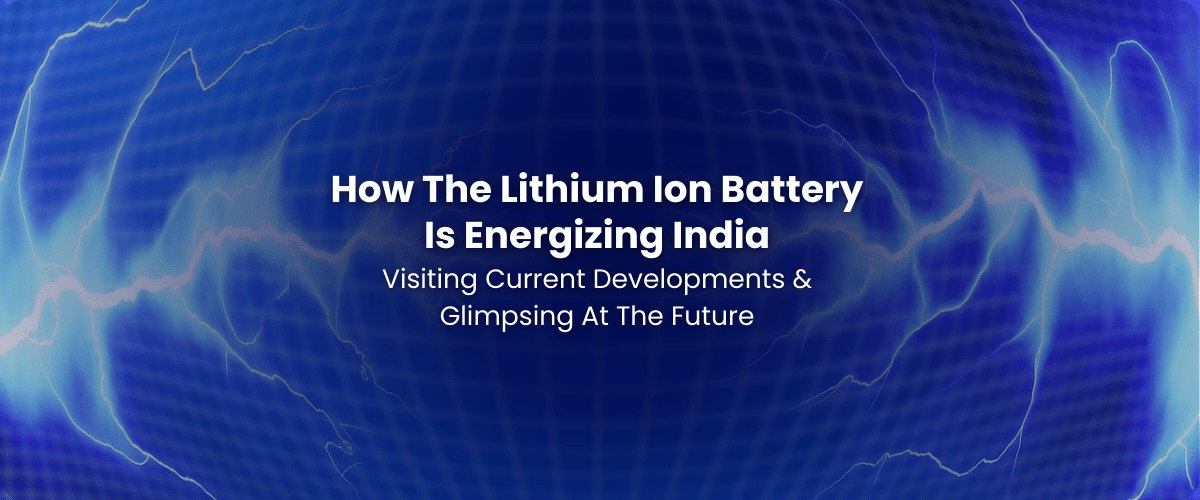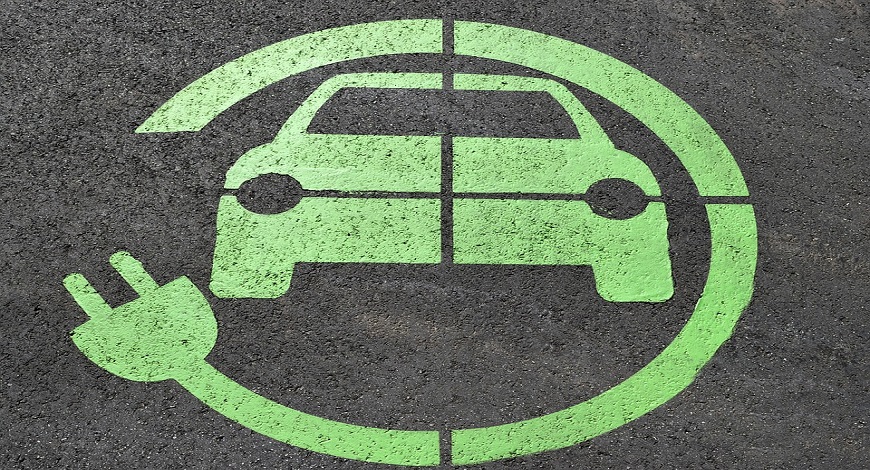
India’s energy sector grapples with challenges like heavy reliance on fossil fuels, rising energy demands, and the imperative for energy security.
Amid these challenges, the nation is swiftly transitioning towards cleaner energy solutions, aligning with ambitious national and international targets for renewable energy deployment. At the core of this transformation is the profound impact of lithium-ion batteries (LIBs), renowned and utilized worldwide for high energy density and long cycle life, LIBs have proven indispensable for electric vehicles (EVs), renewable energy storage, and consumer electronics.
Global demand for lithium-ion batteries is slated to surge, with the projections of an increase from about 700 GWh in 2022 to around 4.7 TWh by 2030. This growth is primarily attributed to the electrification of mobility, renewables infrastructure, and regulatory shifts towards sustainability. The battery recycling industry anticipates over 100 million vehicle batteries to retire in the next decade, ready to convert waste to value.
The Indian lithium-ion battery market stands on the brink of significant expansion, driven by escalating demand across EVs, renewable energy storage, and consumer electronics. Major players from the EV industry and energy transition materials ecosystem are strategically investing in battery manufacturing, and battery recycling, fortifying India’s energy material reserves.
The India Energy Storage Alliance (IESA) forecasts substantial growth, estimating the Lithium ion battery market to reach $80 billion by 2030. Government initiatives, including the Faster Adoption and Manufacturing of (Hybrid &) Electric Vehicles (FAME) program and the Production-Linked Incentive (PLI) Scheme for Advanced Chemistry Cell (ACC) battery storage, play a crucial role in propelling this growth. The market share dynamics reveal varied preferences for different battery types based on applications.
LCO and LFP batteries dominate the consumer electronics segment, while Lithium Nickel Manganese Cobalt Oxide (NMC) batteries take precedence in EVs and energy storage systems. We are also seeing the rise of new and innovative battery chemistries like LTO that are tolerant to physical damage.
India’s commitment to boosting domestic production and deployment of lithium-ion batteries is evident through a spectrum of initiatives. The Production Linked Incentive (PLI) Scheme for Advanced Chemistry Cell (ACC) Battery earmarks a substantial budget of Rs 18,100 crore ($2.5 billion) over five years. It aims to create 50 GWh of ACC manufacturing capacity and 5 GWh of niche ACC manufacturing capacity. Stipulating a 60% sourcing mandate from domestic channels, the scheme emphasizes performance and quality standards.
The PLI Scheme for the Automotive Sector, with a budget of Rs 57,042 crore ($7.8 billion) over five years incentivizes the production of high-value, advanced, and efficient vehicles and components. Its broader objective includes enhancing India’s competitiveness in the global automotive market and generating employment opportunities. The Faster Adoption and Manufacturing of Hybrid and Electric Vehicles in India (FAME India) Scheme, with a budget of Rs 10,000 crore ($1.4 billion) over three years, provides subsidies to EV buyers and supports the development of charging infrastructure, covering various vehicle categories.
The Production-Linked Incentive (PLI) Scheme for Advanced Chemistry Cell (ACC) Battery stands as a cornerstone initiative, driving the development of cutting-edge battery technologies crucial for the growth of electric mobility and renewable energy storage. The budget allocation underscores the Indian government’s commitment to fostering a robust and competitive domestic battery manufacturing industry, reducing import dependency, and positioning India as a key player in the global energy storage market.
The Khanij Bidesh India Limited (KABIL), a strategic joint venture, aims to secure overseas mineral assets, especially lithium and cobalt. With an initial budget of Rs 100 crore ($13.7 million), the venture plans exploration in countries like Argentina, Bolivia, Chile, and Australia, focusing on responsible and sustainable sourcing.
The Battery Waste Management Rules, 2022, establish a framework for the environmentally sound management of waste batteries, facilitating Extended Producer Responsibility. Mandating collection, segregation, transportation, storage, and recycling, the rules enforce penalties for non-compliance and encourage best practices across stakeholders.
The environmental impact of lithium-ion batteries spans the production, usage, and disposal phases. While they contribute to reducing greenhouse gas emissions by replacing fossil fuels in applications like EVs and renewable energy storage, their production and disposal pose environmental challenges.
Second-life battery energy storage solutions emerge as a resource-conserving strategy, fostering economic growth and increasing circularity. Repurposing end-of-life batteries for applications like backup power, grid stabilization, and distributed energy generation extends their utility, reducing the demand for new battery production.
Recycling lithium ion batteries plays a pivotal role in mitigating environmental impacts.
The recovery of valuable materials such as lithium, cobalt, nickel, and manganese reduces dependence on scarce minerals. Moreover, recycling prevents the release of harmful substances like lead, cadmium, and mercury, protecting the environment and human health. The battery recycling industry, expected to grow at a CAGR of 20.45% from 2022 to 2030, is lynchpin to a sustainable energy transition.
Developing alternative or less harmful battery materials emerges as a proactive solution to curbing environmental impacts. This approach seeks to reduce water, energy, and mineral consumption in battery production, lowering the overall environmental footprint. Promising alternatives include sodium-ion, zinc-air, aluminum-air, and solid-state batteries, though these are in nascent stages.
Looking ahead, India’s energy transition holds immense economic potential, estimated to create a market worth up to $80 billion by 2030 for low-carbon technologies. Key strategic initiatives, such as the FAME II scheme and the PLI Scheme for ACC Battery Storage, contribute significantly to India’s ambitious goal of having 30% of its vehicles powered by electricity by 2030.
Accelerating the adoption of high-impact second-life lithium battery energy storage solutions is as imperative as battery recycling, and is instrumental in generating prolonged value from existing battery assets. Nations like the EU and the United States have made significant strides in this regard, implementing incentives and subsidies to promote the development and deployment of energy storage solutions.
By converging efforts, the government and private sector can unlock the untapped potential of second-life lithium battery energy storage and build supply chain resilience.
Related blogs
This entrepreneur wants India to make its own lithium-ion cells for electric vehicle batteries

Forbes India
Rajat Verma already recovers raw materials from used cells at his venture, LOHUM Cleantech. He wants to close the loop by making cells in India as well.
India needs integrated recycling and repurposing battery business model: Rajat Verma of LOHUM Cleantech

YOURSTORY
In an interaction with AutoStory, Rajat Verma, Founder and CEO of LOHUM Cleantech, speaks about building his company, and about battery manufacturing and repurposing as an industry.
Sourcing Raw Materials Is A Big Challenge In Li-ion Battery Space: Founder Lohum

Business World Disrupt
Recognized as ‘The Most Innovative Company of the year 2022’ by The Confederation of Indian Industry (CII), LOHUM is a producer of sustainable Li-ion battery raw materials
1800 572 8822
Email : enquiry@lohum.com
G98, Site, 5, Kasna, Block A, Surajpur Site V, Greater Noida, Uttar Pradesh 201306
LOHUM Cleantech Private Limited, Plot No. D-7 & 8, Site 5th, Kasna Industrial Area, Greater Noida, Gautam Budh Nagar, Uttar Pradesh – 201308
LOHUM Cleantech Private Limited, Plot No. O-17, Site 5th, Kasna Industrial Area, Greater Noida, Gautam Budh Nagar, Uttar Pradesh – 201308